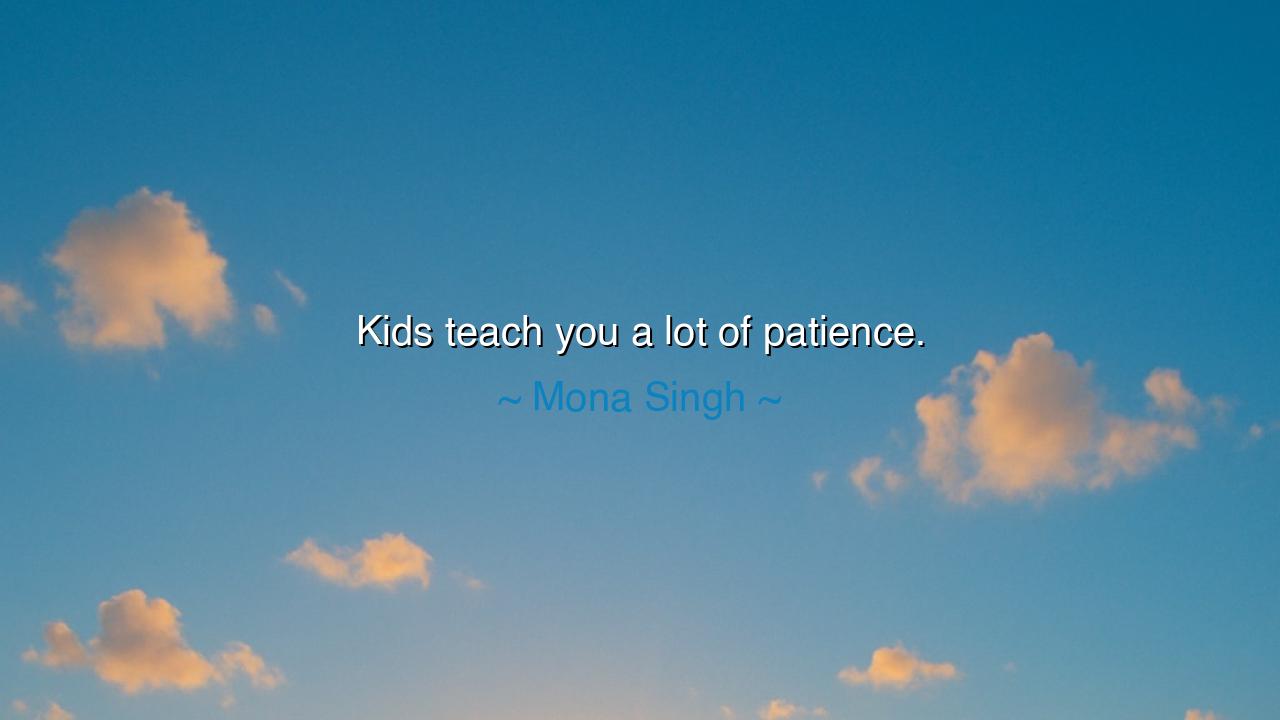
Kids teach you a lot of patience.






Hear the words of Mona Singh, simple yet filled with deep truth: “Kids teach you a lot of patience.” Though short, this utterance carries the weight of generations, for children are not only the future of mankind but also the mirrors in which adults see their own hearts. In their innocence, their questions, their boundless energy, and their endless mistakes, children become teachers themselves—guiding their elders into the school of endurance, compassion, and love.
The ancients, too, knew this. Mothers and fathers of every age have learned that to raise a child is to practice the art of patience daily. For children are unpolished stones—restless, untamed, and filled with wild possibility. They stumble, they break rules, they demand with cries, they move with curiosity, never still. Yet in this ceaseless motion lies their gift: they call forth the patience of the parent, shaping not only their own growth but also the soul of the one who guides them. Thus the child becomes the master, teaching endurance through the trials of daily life.
Consider the story of Abraham Lincoln’s mother, Nancy Hanks Lincoln. Though her time on earth was short, she endured poverty and hardship while raising her son. She taught him with quiet persistence, guiding him with gentleness even when resources were scarce. Her patience planted seeds in Lincoln’s heart, seeds that grew into wisdom and resilience. Without her endurance through his childhood struggles, the great leader may never have found the strength to endure the storms of the Civil War. So it is across history: behind many giants stand parents who learned patience at the feet of their children.
The truth of Singh’s words is that children test the limits of adult control. They cannot be rushed, for their pace is their own. They cannot be silenced forever, for their questions are endless. They cannot be forced into perfection, for mistakes are their teachers. Thus, to live with children is to surrender pride and embrace humility, to learn to wait, to listen, and to guide with gentleness rather than with wrath. In this way, kids become the silent tutors of their parents, shaping their spirits as much as they themselves are shaped.
But the lesson reaches beyond the family. All who lead, all who teach, all who nurture the young must learn this same patience. The teacher in a schoolroom, the mentor with an apprentice, the elder guiding the youth of a village—all must embrace the slow rhythm of growth. For no great thing, whether a tree or a child, matures in haste. Impatience destroys, but patience cultivates life.
The deeper wisdom here is this: to raise a child is not only to give life, but to grow oneself. Every tantrum endured, every repeated question answered, every stumble forgiven becomes an exercise of the soul. The parent discovers strength they never knew, tenderness they never expected, endurance they never imagined. This is why Singh declares that kids teach patience—because children open pathways of growth in their parents that no book or teacher could ever reveal.
The lesson for us, children of tomorrow, is clear: welcome the trials of patience as hidden blessings. Do not see the slowness of the young, their mistakes, or their endless needs as burdens alone, but as opportunities to strengthen your heart. In learning to endure with love, you grow into wisdom. In learning to guide with gentleness, you prepare yourself for greater labors. Let the child be both your student and your teacher.
Practical actions await you: when you feel frustration rising, breathe deeply and remember that patience is being built within you. Accept the slowness of growth, for both you and the child are learning together. See each moment of struggle as training for endurance, and each smile as the reward of your labor. In this way, the daily challenges of raising or teaching children become not only duties, but sacred lessons in the art of living.
Thus let Mona Singh’s words echo as timeless truth: “Kids teach you a lot of patience.” For in guiding the young, we ourselves are guided. In nurturing them, we ourselves are nurtured. And in learning to wait with love, we discover the strength to endure not only childhood’s chaos, but all the trials of life.






AAdministratorAdministrator
Welcome, honored guests. Please leave a comment, we will respond soon